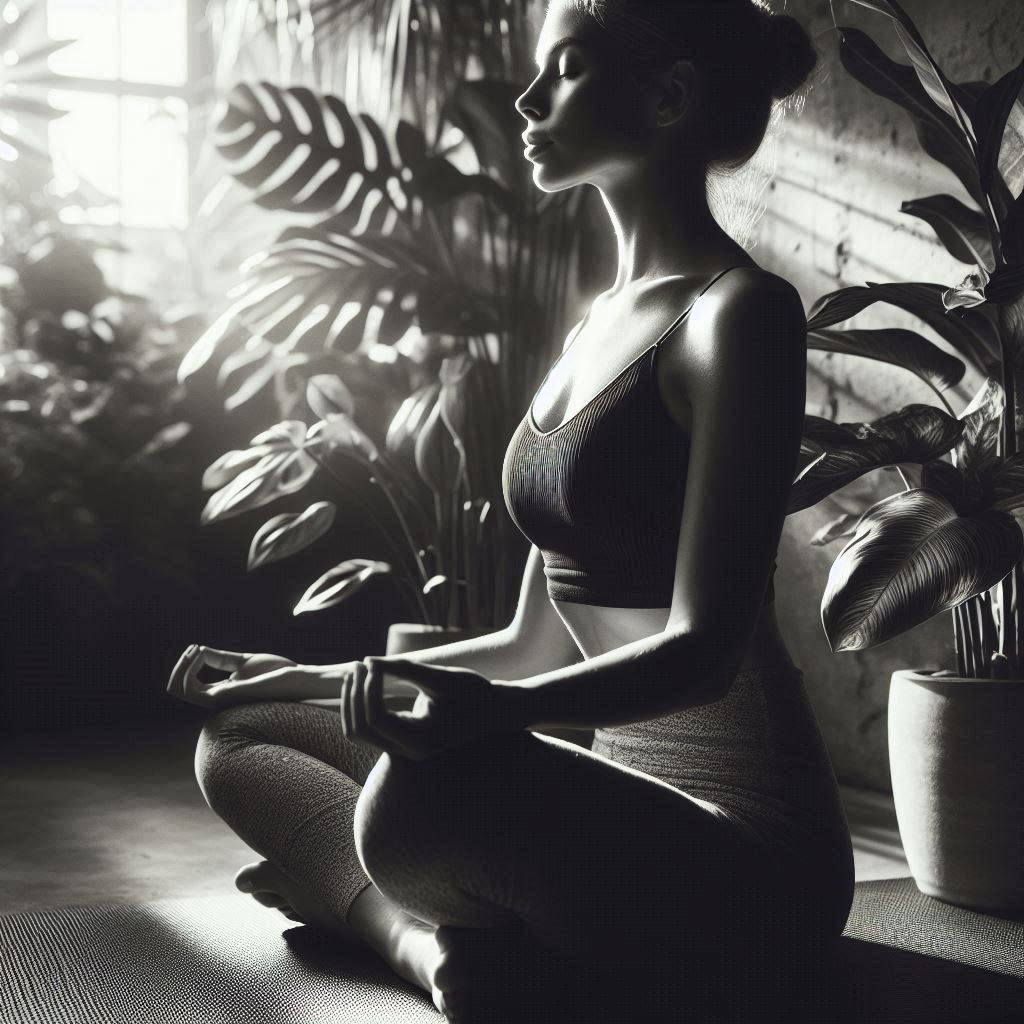Panic attacks can strike suddenly, without warning, in the most inconvenient places. When you’re in public, they can feel even more overwhelming.
From a racing heart to a sense of impending doom, the symptoms can be intense and difficult to manage. These episodes can disrupt daily life, making even simple outings a source of fear and anxiety.
But you’re not powerless. Effective strategies can help you regain control. With the right tools, handling panic attacks in public spaces is possible. Understanding the symptoms and having a plan can make a significant difference. Whether it’s deep breathing, grounding techniques, or seeking a quiet space, knowing what works for you is crucial. In this post, we provide proven tips and strategies to help navigate these challenging situations with confidence.
Recognizing Panic Attack Symptoms
Recognizing the symptoms of a panic attack is a crucial first step in managing these sudden and intense episodes. Panic attacks can hit you like a bolt out of the blue, often leaving you feeling vulnerable and confused. Knowing what to look for makes it easier to act quickly, providing a pathway to regain your composure.
Physical Symptoms
Panic attacks manifest not just emotionally but physically as well. When you’re aware of the physical signs, you can better anticipate and mitigate the impact. Here’s what to look for:
- Rapid Heartbeat: A pounding heart is common, often leaving you feeling like you’ve run a marathon without taking a step.
- Shortness of Breath: It’s as if the air has gotten thicker, making it hard to take a full breath.
- Sweating: You might suddenly sweat as if it’s a hot summer day, no matter the actual temperature.
- Dizziness: The world might start to feel like it’s spinning, causing you to lose your sense of balance.
Recognizing these symptoms early can help reassure you that what you’re experiencing is a panic attack, and offer a chance to employ calming techniques.
Emotional Symptoms
Beyond the physical, panic attacks also bring a tidal wave of emotional turmoil. These feelings can be overwhelming, but identifying them can help you reclaim control:
- Fear: An overpowering sense of fear often comes without any apparent reason.
- Impending Doom: You might feel as though something terrible is about to happen, even when there’s no real threat.
- Loss of Control: Many describe it as feeling like the rug has been pulled from under them, leaving them grasping for stability.
These emotional symptoms can compound the physical ones, creating a feedback loop of anxiety and stress. Recognizing them for what they are—a temporary surge rather than a permanent state—can be empowering.
Understanding these symptoms is a key component in addressing panic attacks effectively. With awareness comes the ability to manage and mitigate, helping you regain control when you might feel it slipping away.
Immediate Strategies to Manage Panic Attacks
Panic attacks can catch you off guard in public spaces, leaving you feeling vulnerable and anxious. However, with immediate strategies, you can regain control and navigate these sudden episodes more effectively. The key is to have a set of tactics ready to employ at a moment’s notice.
Finding a Safe Space
When caught in the throes of a panic attack, finding a safe space can be crucial. Physically removing yourself from a crowded or noisy environment to a quieter location can help reduce overwhelming stimuli. A quiet corner, a nearby restroom, or even stepping outside for a moment can provide the privacy needed to focus on calming down. This brief retreat acts as a circuit breaker, providing a pause in the chaos.
Breathing Techniques
Deep breathing is a powerful tool in managing panic attacks. The 4-7-8 technique—breathing in for four seconds, holding for seven, and exhaling for eight—helps slow your heart rate and stabilize your mind. By focusing on your breath, you can gently coax your anxious body into a state of calm. It’s like sending your nervous system a comforting lullaby, whispering that it’s okay to relax.
Grounding Techniques
Grounding keeps you anchored in the present when panic feels like it’s sweeping you away. The 5-4-3-2-1 method is particularly effective: identify five things you can see, four you can touch, three you can hear, two you can smell, and one you can taste. This simple exercise engages your senses and pulls your focus away from the spiraling anxiety, allowing your mind to settle.
Distraction Techniques
Redirecting your attention can also mitigate a panic attack’s grip. Look around the space and find something simple to focus on. Whether it’s the pattern on a rug or the chatter of people nearby, focusing externally can lighten the intensity of internal chaos. Alternatively, a brief conversation with a friend or stranger can serve as a welcome distraction, acting like a gentle tug back to reality.
Use of Coping Objects
Carrying small coping objects can offer comfort during a panic attack. Items like stress balls, scented handkerchiefs, or a cold bottle of water can serve as tactile and sensory tools to help ground your senses. These objects act like anchors, forging a tiny safe harbor in the storm of your emotions, allowing you to weather the storm with a bit more ease.
Long-term Coping Strategies
Dealing with panic attacks is a journey, not a sprint. While immediate tactics help in the moment, long-term coping strategies can reduce the frequency and intensity of episodes. By building a robust support system and exploring different therapeutic avenues, you can empower yourself to manage and even transform your relationship with anxiety.
Cognitive Behavioral Therapy (CBT)
Cognitive Behavioral Therapy (CBT) is a powerful tool that helps reframe harmful thought patterns. Think of your mind as a computer. Sometimes, it runs programs that don’t serve you well. CBT acts like antivirus software, scanning for these faulty codes and rewriting them. By addressing the root of your anxieties, CBT gradually diminishes their grip. It helps you recognize negative thought spirals and teaches you to challenge these fears with logic and evidence.
Medication Options
Medication can be another piece of the puzzle. There are various options to consider, ranging from selective serotonin reuptake inhibitors (SSRIs) to benzodiazepines. SSRIs like Prozac and Zoloft adjust brain chemicals, easing anxiety symptoms over time. On the other hand, benzodiazepines like Xanax provide instant relief, although they are typically for short-term use due to addiction risks. Consulting with a healthcare provider ensures you find medications tailored to your needs.
Mindfulness and Relaxation Techniques
Mindfulness practices aren’t just buzzwords; they’re effective methods for stress reduction. Imagine your mind as a stormy sea. Mindfulness is the anchor that keeps you steady. Techniques like meditation, yoga, and deep breathing exercises offer a port in the storm, helping you ground yourself when anxiety swells. Regular practice strengthens resilience against future attacks, promoting a sense of calm and control.
Support Systems
Navigating panic attacks isn’t a lone voyage. Friends, family, and support groups can be invaluable allies. Consider them your lifeboats. They offer reassurance and perspective when the waters get rough. Having someone who understands or has experienced similar struggles can be immensely comforting. Encourage open dialogues about your feelings, fostering a safety net that catches you when anxiety strikes.
Professional Help and Therapy
Sometimes, self-help isn’t enough. Seeking professional therapy can provide the guidance and tools needed for long-term management. Therapists skilled in anxiety disorders offer bespoke strategies to combat panic attacks. They work with you to build a toolkit of coping mechanisms, adapted to your unique circumstances. Don’t wait for the storm to pass; there’s immense strength in asking for help when navigating these turbulent waters.
Helping Others During a Panic Attack
When someone experiences a panic attack in public, it can be daunting for both the individual and those around them. While the episode may be intense, your actions can make a significant difference in their experience. Helping someone in this situation involves a mix of empathy, understanding, and practical steps to ease their distress.
Stay Calm and Reassure
In moments of crisis, your calm presence can be the anchor someone needs. By maintaining composure, you create a reassuring environment that can help lessen the intensity of the panic attack. Use gentle, soothing words and speak at a measured pace. This sets the tone and offers the reassurance that they are not alone.
Encourage Deep Breathing
Breathing exercises are akin to first aid for panic attacks. Encourage the person to take slow, deep breaths, inhaling through the nose and exhaling through the mouth. You could guide them with a simple technique like counting to four on the inhale, holding for four, and then exhaling for six. This helps engage the parasympathetic nervous system, gradually calming the storm within.
Avoid Asking Questions
Bombarding someone with questions can exacerbate their stress. Instead, focus on offering support without overwhelming them with inquiries. Questions often unintentionally add layers of anxiety, as they may struggle to articulate their feelings while panicking. Instead, listen and provide gentle guidance as needed.
Offer a Safe Space
Offer a quiet area for the person to collect themselves away from the public eye. Stepping away from the bustling environment helps minimize external stimuli. This brief retreat acts as a refuge, allowing them to focus solely on their recovery without external pressures.
Follow Up After the Episode
Once the episode has subsided, follow up with the individual to show your support. A simple text or call can affirm your care and concern. This gesture not only strengthens your connection but also reassures them that they are valued and supported. Remember, your empathy and understanding can make a world of difference in their recovery journey.
Conclusion
Handling panic attacks in public requires recognizing symptoms and using effective strategies. Techniques like deep breathing, grounding, and finding safe spaces are practical tools that offer immediate relief. Long-term approaches, such as therapy and mindfulness, can help decrease the frequency and severity of these episodes.
Taking proactive steps is empowering. Equip yourself with coping techniques and reach out for professional support if needed. Panic attacks don’t define you. Begin your journey towards reclaiming your public life.








